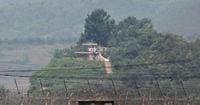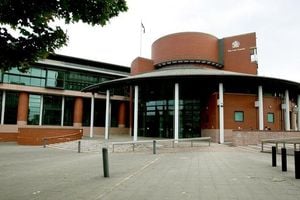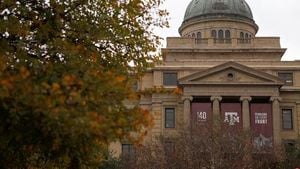In a poignant reminder of the ongoing division between North and South Korea, the Daonsoop coffee shop, owned by Lee Oh Sook, a refugee from North Korea, has opened its doors with a mission far greater than serving coffee. Located perilously close to the border, this establishment is a tribute to Lee's parents, who dreamt of returning to their homeland but never could. "From the coffee shop, we feel North Korea is very close, yet we cannot reach it," Lee remarked, encapsulating the bittersweet reality faced by many families separated by the Korean War.
The coffee shop not only serves as a place for visitors to enjoy a warm beverage but also stands as a symbol of the longing for reunification and peace. The establishment's location is significant; it integrates a bunker and a tank placement position, a necessity for obtaining construction permits due to its proximity to the border. Below the large glass windows of Daonsoop lies the Jayu Ro highway, also known as the "Road to Freedom," which was once envisioned as a route connecting Seoul to Pyongyang in the event of reunification. Adjacent to the coffee shop flows the Imjin River, which serves as a physical divide between the two Koreas, marked by military warnings that intruders may be treated as enemies and shot.
Every night, the atmosphere becomes charged with tension as loudspeakers from North Korea emit eerie sounds—howls, screams, and ghostly cries—designed to unsettle those living near the border. "The sounds are so loud that they shake our windows," Lee said, further illustrating the psychological warfare that continues to play out in this divided region.
Daonsoop is not the only establishment with a view of North Korea, but it holds the distinction of being the closest to the border. The bunker inside the coffee shop is repurposed annually by the South Korean army for drills, while the café also doubles as an art exhibition space showcasing the works of cartoonist Kim Dae Nyeon. His paintings poignantly capture the pain of separation and the hope for reunification, depicting images such as a bridge over the Imjin River and a weasel wearing noise-canceling headphones in protest against the North Korean loudspeakers.
Kim, who previously served as the Chairman of the National Election Commission of South Korea, reflects a political perspective through his art. "When life gets tough, I often come here, look toward North Korea, and feel grateful for what I have," Kim shared. Daonsoop has become a sanctuary for North Korean defectors in South Korea, particularly during traditional holidays like Tet Nguyen Dan and Chuseok, when they gather to gaze at their homeland from across the border.
As smoke from North Korean farmers burning straw envelops the area during late winter, Lee observes how many visitors are unaware of how close North Korea truly is. "When they realize, they begin to understand what it means to live in a divided country," she explained.
In a separate development, the Geumgangsan Observatory in Kaesong County, Gangwon Province, South Korea, is set to reopen this week after a three-year hiatus due to heightened tensions in inter-Korean relations. Announced on May 6, 2025, the Gangwon provincial government will operate the "DMZ Kaesong Peace Trail Section B" from May 9 to November 30. This initiative aims to revive interest in the region and promote peace.
The DMZ Kaesong Peace Trail consists of two routes: Route A, known as the Tongil Observatory, is a 3.6-kilometer round-trip journey that starts from Tongil Observatory and follows the barbed wire fence along the coast. This route has been operational since April 29, 2025. Route B, which includes the newly reopened Geumgangsan Observatory, spans 7.2 kilometers and offers visitors the closest view of North Korea, allowing them to observe security measures from both sides of the border.
Operating twice daily on Tuesdays, Wednesdays, Fridays, Saturdays, and Sundays at 10 a.m. and 2 p.m., the program has limited daily registrations—40 for Route A and 20 for Route B. The provincial government hopes that by reopening these routes, interest in security tourism along the inter-Korean border will flourish.
In the context of these developments, it is noteworthy that North Korea recently informed the International Civil Aviation Organization (ICAO) of its intention to sever air traffic control communication channels with South Korea, a move that further underscores the fragile nature of inter-Korean relations.
As the Daonsoop coffee shop and the Geumgangsan Observatory reopen their doors, they serve as stark reminders of the complexities and challenges that continue to define life on the Korean Peninsula. Both establishments not only highlight the yearning for peace and reunification but also reflect the ongoing struggles faced by those caught in the crossfire of history. The stories of Lee Oh Sook and the visitors to these sites resonate deeply, encapsulating the human experience behind the political tensions.




